Abstract
Apparent resistances to water transport in the liquid phase were determined from measurements of soil, root, basal shoot internode, shoot apex, and leaf water potentials and water flux in Vitis vinifera (cv White Riesling) during soil drying. Predawn water potential differences (ΔΨ) in the shoots accounted for 20% of the total ΔΨ between the soil and the shoot apex when plants were well-watered but increased to about 90% when shoot growth ceased. The ΔΨ from soil to root was essentially constant during this period. At low water potential, the ΔΨ in the shoot was persistent when transpiration was low (predawn) or completely prevented (plant bagging). The apparent hydraulic resistance between the basal shoot internode and most rapidly expanding leaf (or shoot apex) increased several-fold when water was withheld. Leaf and internode expansion both exhibited high sensitivity to increasing hydraulic resistance. Measurements of pneumatic resistance to air flow through frozen internode segments indicated progressive vapor-filling of vessels as soil drying progressed. From these observations and others in the literature, it was suggested that embolization may be a common occurrence and play an important role in the inhibition of shoot growth at moderate water deficits.
Full text
PDF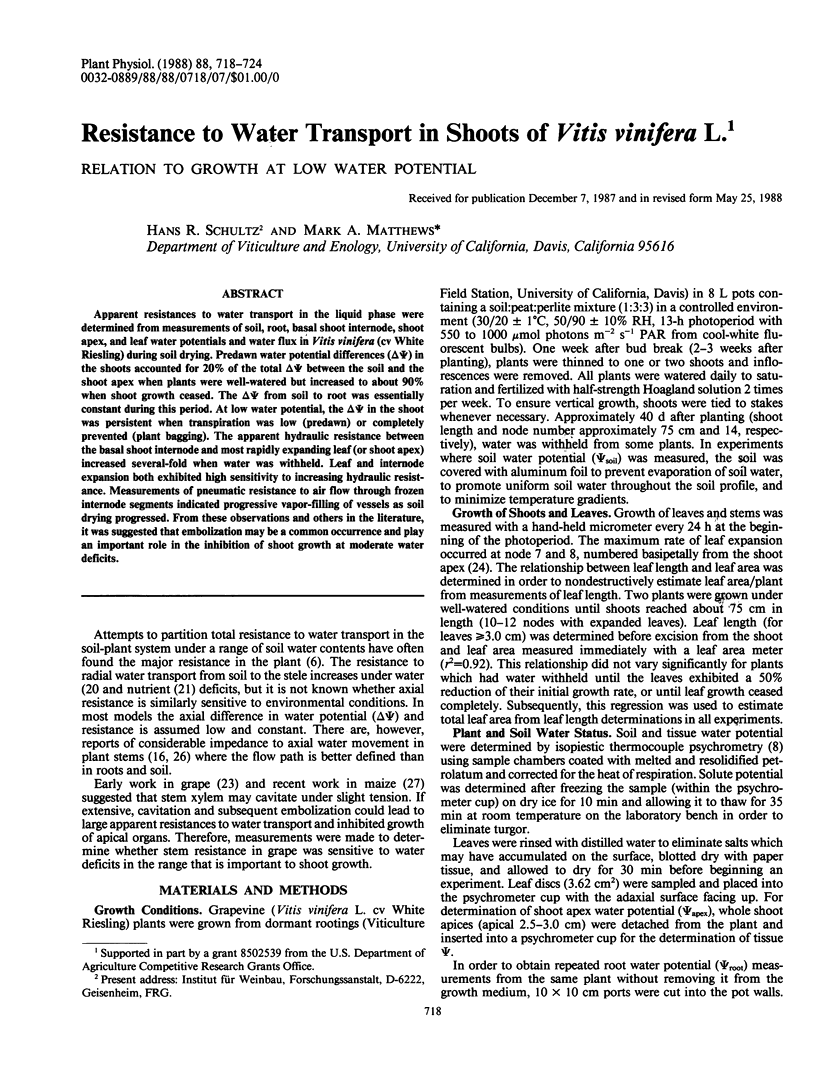
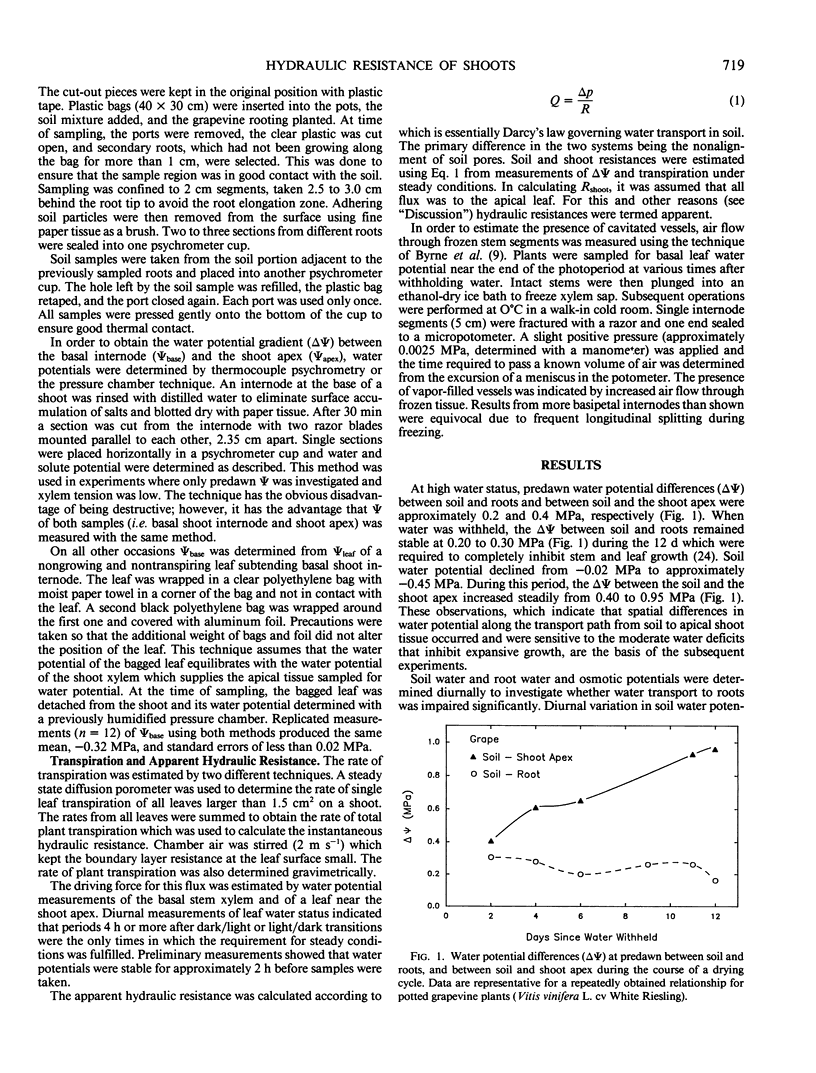
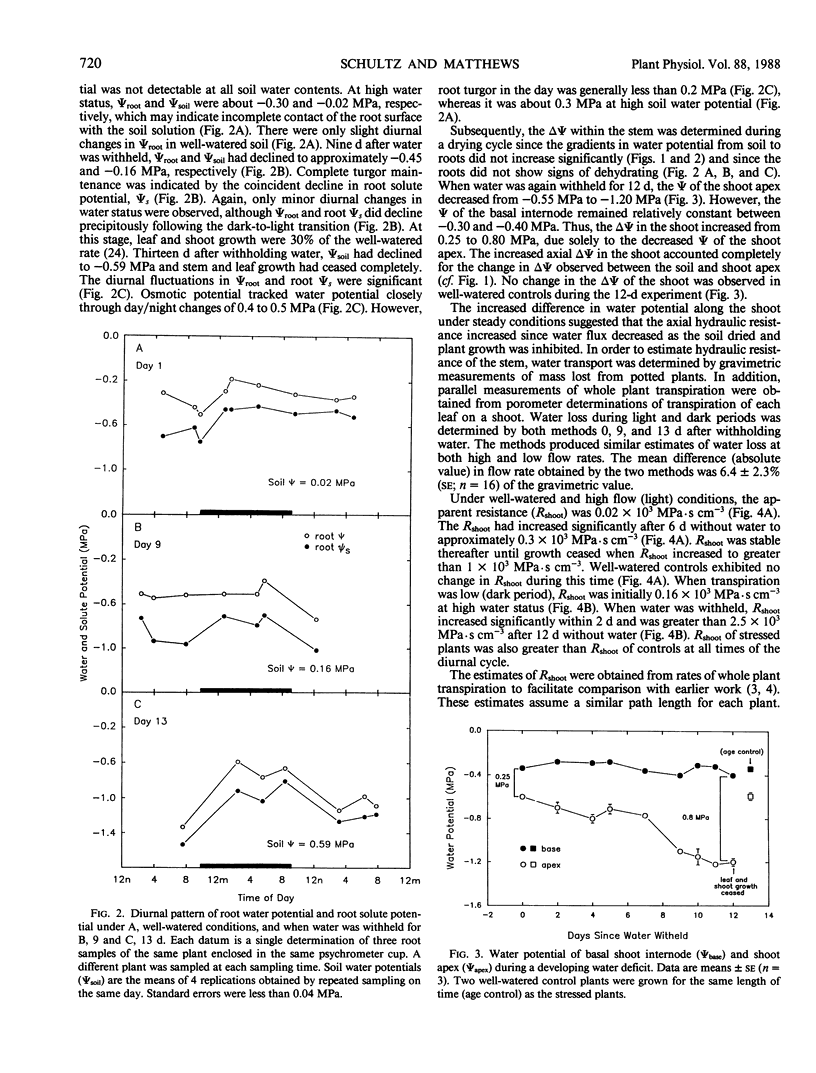
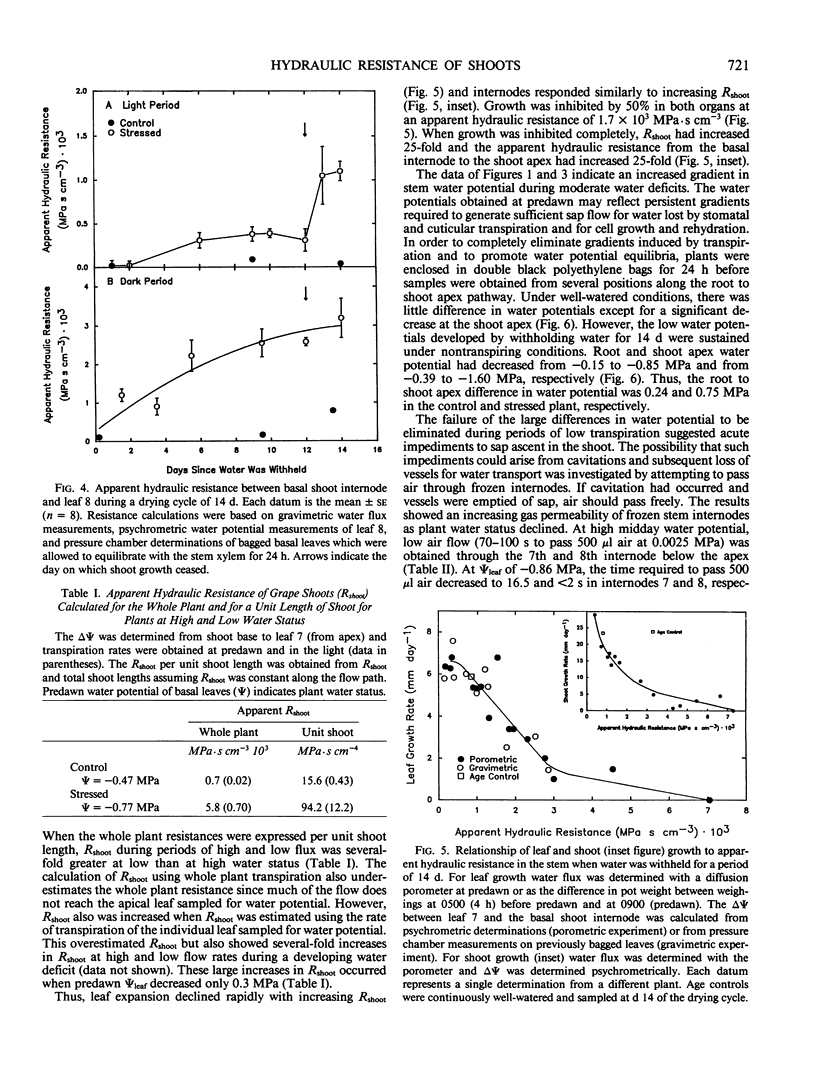
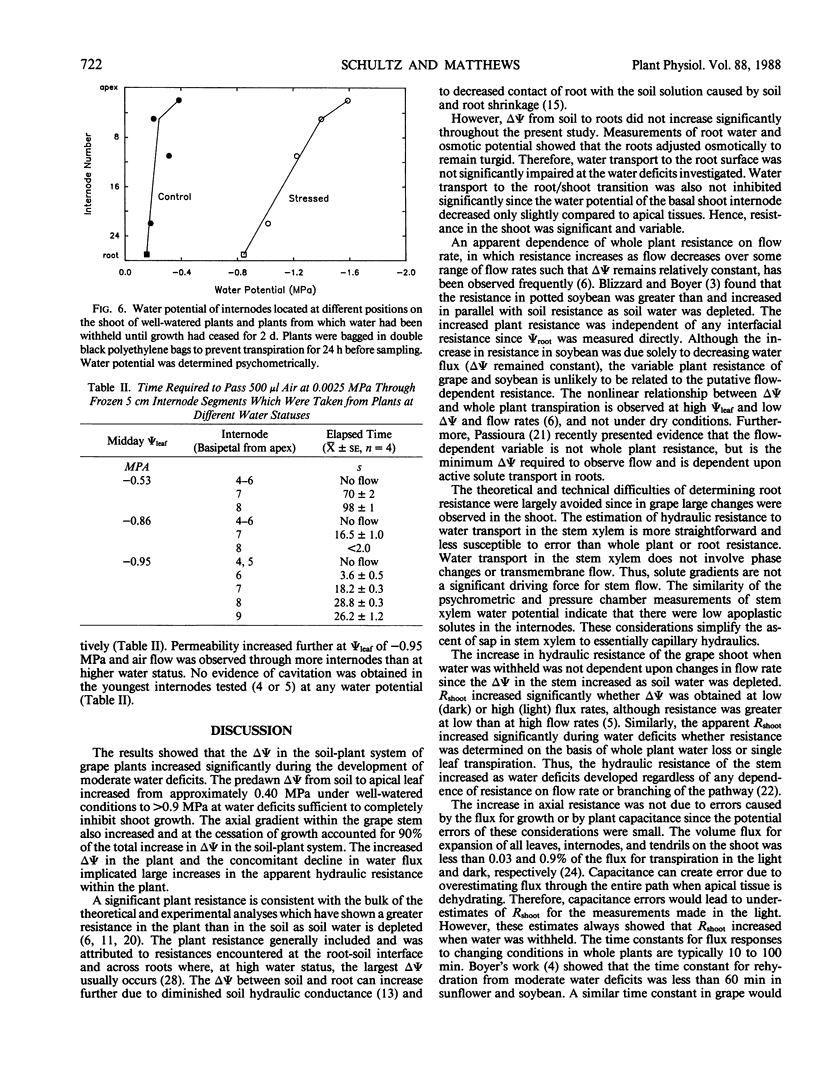
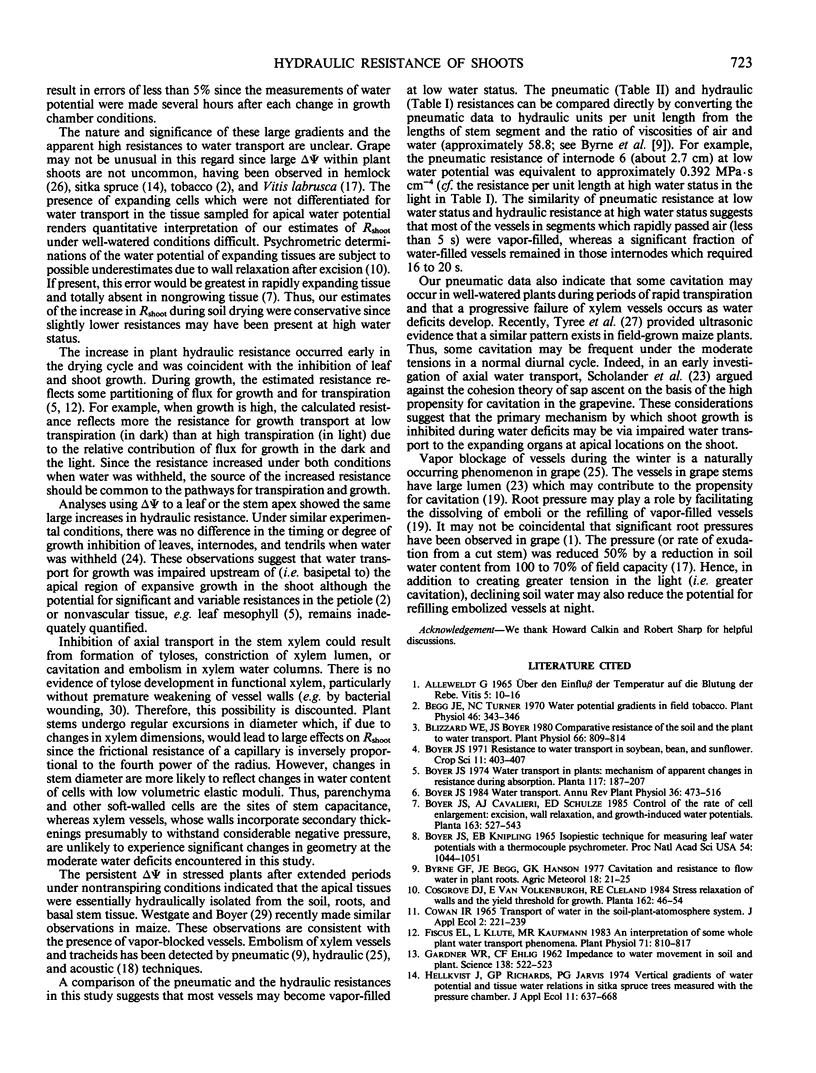
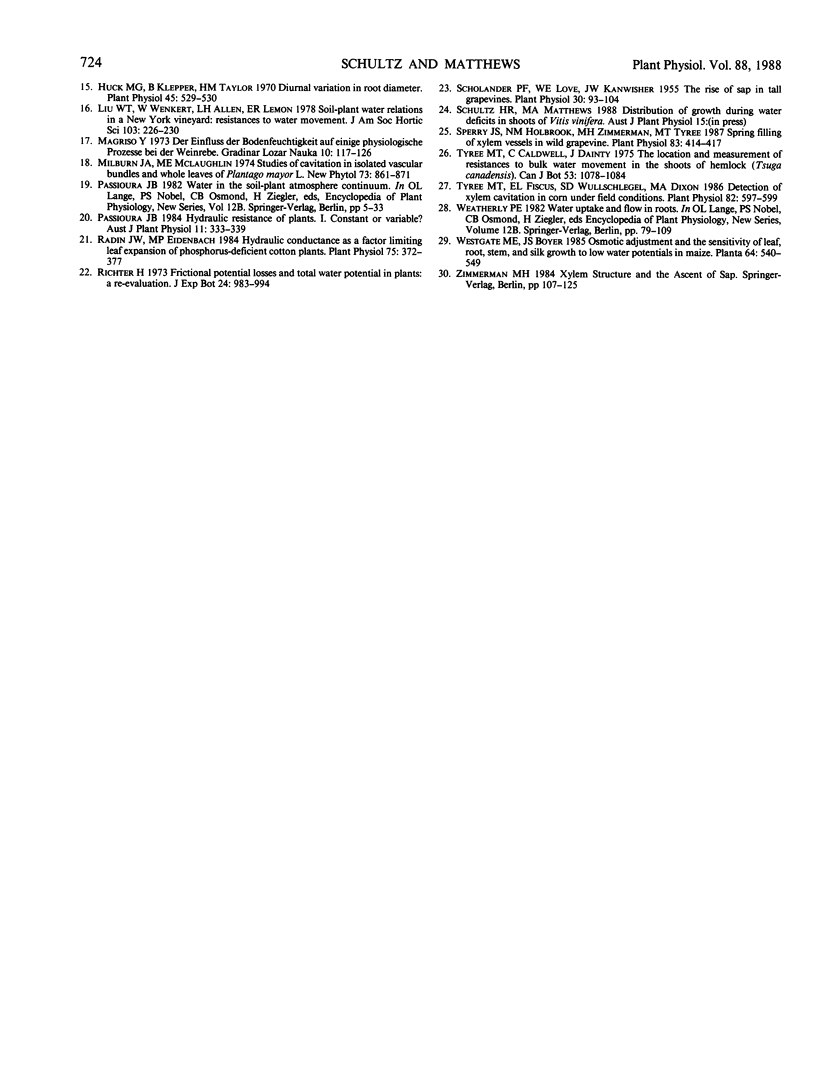
Selected References
These references are in PubMed. This may not be the complete list of references from this article.
- Begg J. E., Turner N. C. Water potential gradients in field tobacco. Plant Physiol. 1970 Aug;46(2):343–346. doi: 10.1104/pp.46.2.343. [DOI] [PMC free article] [PubMed] [Google Scholar]
- Blizzard W. E. Comparative resistance of the soil and the plant to water transport. Plant Physiol. 1980 Nov;66(5):809–814. doi: 10.1104/pp.66.5.809. [DOI] [PMC free article] [PubMed] [Google Scholar]
- Cosgrove D. J., Van Volkenburgh E., Cleland R. E. Stress relaxation of cell walls and the yield threshold for growth: demonstration and measurement by micro-pressure probe and psychrometer techniques. Planta. 1984;162(1):46–54. doi: 10.1007/BF00397420. [DOI] [PubMed] [Google Scholar]
- Fiscus E. L., Klute A., Kaufmann M. R. An interpretation of some whole plant water transport phenomena. Plant Physiol. 1983 Apr;71(4):810–817. doi: 10.1104/pp.71.4.810. [DOI] [PMC free article] [PubMed] [Google Scholar]
- Gardner W. R., Ehlig C. F. Impedance to Water Movement in Soil and Plant. Science. 1962 Oct 26;138(3539):522–523. doi: 10.1126/science.138.3539.522. [DOI] [PubMed] [Google Scholar]
- Huck M. G., Klepper B., Taylor H. M. Diurnal variations in root diameter. Plant Physiol. 1970 Apr;45(4):529–530. doi: 10.1104/pp.45.4.529. [DOI] [PMC free article] [PubMed] [Google Scholar]
- Radin J. W., Eidenbock M. P. Hydraulic conductance as a factor limiting leaf expansion of phosphorus-deficient cotton plants. Plant Physiol. 1984 Jun;75(2):372–377. doi: 10.1104/pp.75.2.372. [DOI] [PMC free article] [PubMed] [Google Scholar]
- Scholander P. F., Love W. E., Kanwisher J. W. The Rise of Sap in Tall Grapevines. Plant Physiol. 1955 Mar;30(2):93–104. doi: 10.1104/pp.30.2.93. [DOI] [PMC free article] [PubMed] [Google Scholar]
- Sperry J. S., Holbrook N. M., Zimmermann M. H., Tyree M. T. Spring filling of xylem vessels in wild grapevine. Plant Physiol. 1987 Feb;83(2):414–417. doi: 10.1104/pp.83.2.414. [DOI] [PMC free article] [PubMed] [Google Scholar]
- Twente J. W., Twente J. A. Regulation of hibernating periods by temperature. Proc Natl Acad Sci U S A. 1965 Oct;54(4):1044–1051. [PMC free article] [PubMed] [Google Scholar]
- Tyree M. T., Fiscus E. L., Wullschleger S. D., Dixon M. A. Detection of Xylem Cavitation in Corn under Field Conditions. Plant Physiol. 1986 Oct;82(2):597–599. doi: 10.1104/pp.82.2.597. [DOI] [PMC free article] [PubMed] [Google Scholar]


